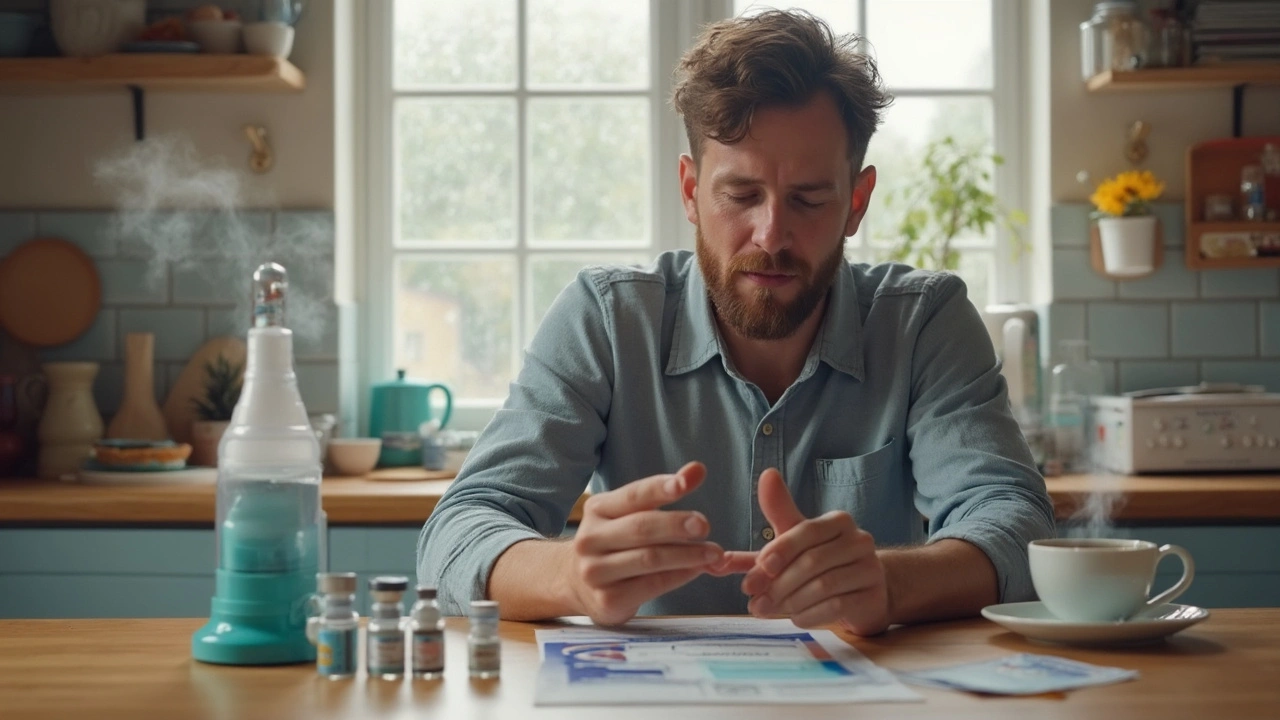Stuck without Ventolin and need quick relief? This guide unpacks over-the-counter nebulizer options available in the US, including saline solution, epinephrine ampules, and short-acting beta agonists you can snag without a full prescription. You'll get tips on how and when to use these solutions, what works for different kinds of breathing trouble, and how they stack up in safety and effectiveness. Practical advice, real-life caution, and the info you actually need for managing respiratory issues at home.
OTC Nebulizer Solution: What to Use and How to Use It
Looking for an over-the-counter (OTC) nebulizer solution? The simplest and safest options are saline solutions. They help loosen mucus, hydrate airways, and make breathing easier without drugs. This guide explains which OTC solutions are common, how to use them, and what to watch out for.
Which OTC solutions are safe?
Normal (0.9%) sterile saline is the go-to OTC choice. It’s preservative-free and made for inhalation. You can also find hypertonic saline (3% or stronger) OTC in some stores or online—those draw fluid into the airways and can thin thick mucus, but they can also make you cough more.
Avoid solutions not labeled for nebulizer or inhalation. Wound irrigation fluids, contact lens saline, and solutions with preservatives or additives can irritate the lungs. Always pick products marked "sterile" and "for inhalation" when available.
How to use OTC nebulizer solution safely
Use single-dose vials when possible. If you open a multi-dose bottle, follow the manufacturer’s storage instructions and toss leftovers if in doubt. Don’t reuse single-use vials. Fill the nebulizer cup with the exact amount the device or instructions say—overfilling can change the mist quality.
Clean your nebulizer after every use. Rinse parts with warm water, let air-dry, and disinfect according to the device manual. A dirty nebulizer breeds bacteria and can make respiratory problems worse.
If you or your child coughs or tightens up after using hypertonic saline, stop and contact your provider. People with reactive airways (asthma) sometimes need a quick-relief inhaler before trying hypertonic saline. Don’t add medicines to OTC saline unless a healthcare professional tells you to—mixing medications without guidance can be unsafe.
Frequency depends on why you’re using it. For simple mucus looseners, a few times a day is common. If you have chronic lung disease, follow your care plan. Never replace prescribed inhaled medicines with saline—saline is supportive, not a substitute for bronchodilators or steroids when those are needed.
Kids and elderly need extra care. Use age-appropriate masks or mouthpieces and watch for distress. If a child becomes very sleepy, has trouble breathing, a high fever, or blood in sputum after treatment, get medical help right away.
Quick tips: use room-temperature solution, avoid essential oils or herbal drops in the nebulizer, and store unopened vials in a cool, dry place. If you’re unsure which OTC saline to buy, take a picture of the product and ask your pharmacist—most will point out preservative-free, sterile options in seconds.
Questions about prescription meds, dosing, or mixing treatments? Talk to your doctor. OTC saline can help, but it’s one tool—not a full treatment plan—for breathing issues.

